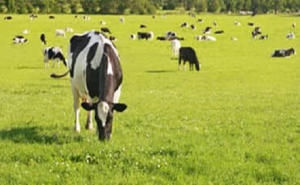
The organisation’s research, which highlighted these issues, covered 25 of the country’s provinces comprising nearly a third of the Russian territory. In total, the organisation studied milk produced by 50 Russian brands and revealed violations of safety standards in 14% of samples and ‘various defects’ in 40% more samples.
Safety issues involved contamination with E. coli or an increased population of other harmful bacteria. The ‘various defects’ category included bad smell or taste. The researchers indicated that this usually means a poor quality of raw milk. Some of tested products appeared to be falsified.
On the other hand, the study discovered no problems with elevated antibiotic content. This problem used to be very common in the Russian dairy industry due to relatively soft rules of feed antibiotic administration.
Old milk equipment
Maria Zhebit, head of the public relations department of the Russian union of dairy producers, Soyuzmoloko, told the Russian publication Moskovskaya Gazeta the discovered quality issues could be partly attributed to the worn technologies of dairy producers in Russian provinces.
“Not all small regional companies have an opportunity to modernise equipment and purchase the most modern technology. Many factories in the Russian regions are still operating at the capacities that were acquired 30-40 years ago,” she said. “Such [lower methods of] technology do not always allow the manufacturing of products that meet advanced standards, but, as we can see, almost all companies try to strictly comply with safety standards.”
Import disruptions
In addition, the Russian dairy industry suffers from a lack of some imported ingredients, though it is hard to say to what extent this problem impacts the quality of dairy products on grocery shelves.
“Today, there is no shortage of starter cultures on the market. The largest manufacturers have established a stock of imported ingredients, and import products keep flowing on the market. Russia provides itself with kefir starter cultures, but dependence on imports is high in terms of other types of starter cultures. In terms of packaging, there is also [dependence on] on imports,” said Zhebit.
Moskovskaya Gazeta discovered that some Russian dairy producers continue to import required components and raw materials from Europe. An anonymous source in the Russian dairy industry said that shortly following the introduction of sanctions in early 2022, the cost of logistics from the European Union doubled the price for all ‘imported stuff’.
However, the logistics issues were solved and now the prices, on average, are 15-20% higher than at the beginning of the year.

























